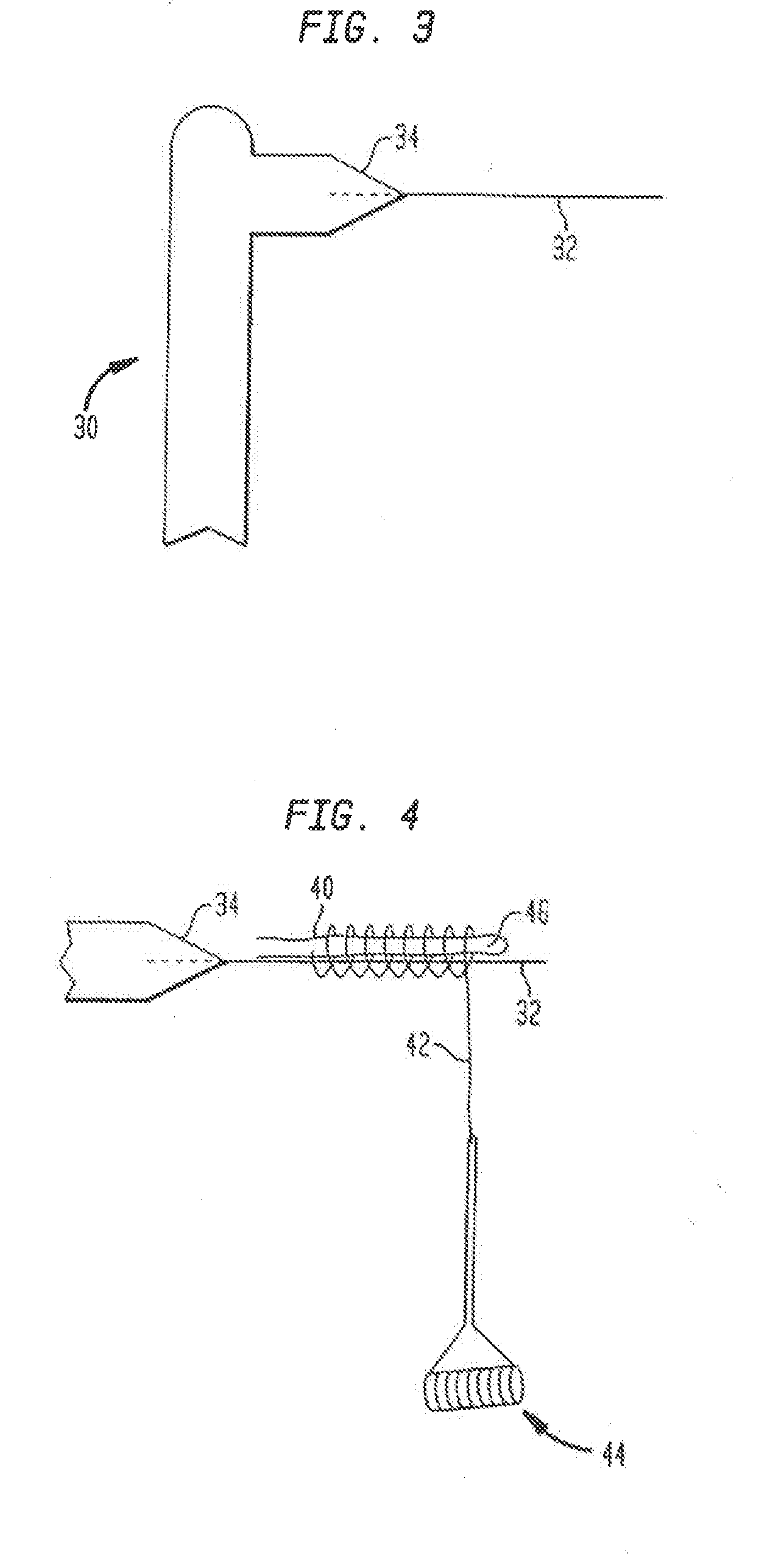Fly Fishing Method and Apparatus
a technology of fly fishing and apparatus, which is applied in the field of fly fishing apparatus and methods, can solve the problems of increasing the odds that a fish following the release will not survive, affecting the survival rate of released fish, and difficulty in extracting the hook, etc., and achieves the effect of good material and high coefficient of friction
- Summary
- Abstract
- Description
- Claims
- Application Information
AI Technical Summary
Benefits of technology
Problems solved by technology
Method used
Image
Examples
Embodiment Construction
[0096]In accordance with a preferred embodiment of the invention, apparatus and methods are provided for improved fly-fishing and resource protection.
[0097]Advantageously, the hook is not required to enter the inside of a fish's mouth to affect capture. This eliminates the mortal risks associated with a hook piercing a fish's internal organs.
[0098]Another advantage finds the circle hook engaged in the outer jaw, exposed with the hook eye facing out, allowing for a simple and speedy hook extraction and fish release. The reduced handling stress associated with the simple hook extraction, not needing to access a hook deep in the mouth cavity, promotes an increased rate of survival for released fish.
[0099]Another advantage is the hook-less fly allows the hook-set to be in the opposite direction with respect to conventional fishing. This exposes the hook to the much more defined edge located on the outside of the jaw.
[0100]Another advantage is that circle hook use benefits from exposure ...
PUM
 Login to View More
Login to View More Abstract
Description
Claims
Application Information
 Login to View More
Login to View More - R&D
- Intellectual Property
- Life Sciences
- Materials
- Tech Scout
- Unparalleled Data Quality
- Higher Quality Content
- 60% Fewer Hallucinations
Browse by: Latest US Patents, China's latest patents, Technical Efficacy Thesaurus, Application Domain, Technology Topic, Popular Technical Reports.
© 2025 PatSnap. All rights reserved.Legal|Privacy policy|Modern Slavery Act Transparency Statement|Sitemap|About US| Contact US: help@patsnap.com



